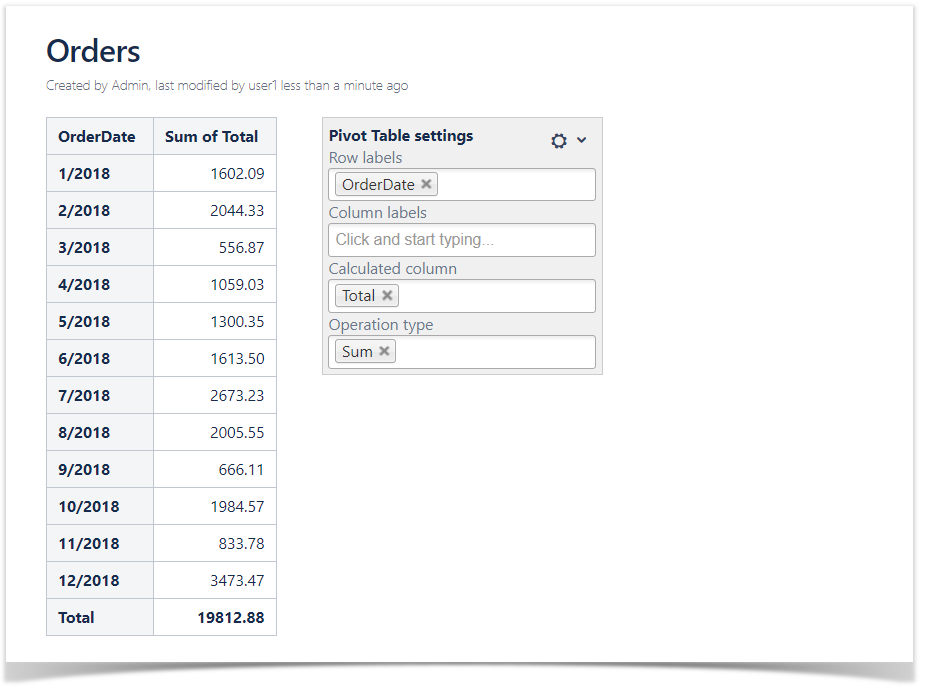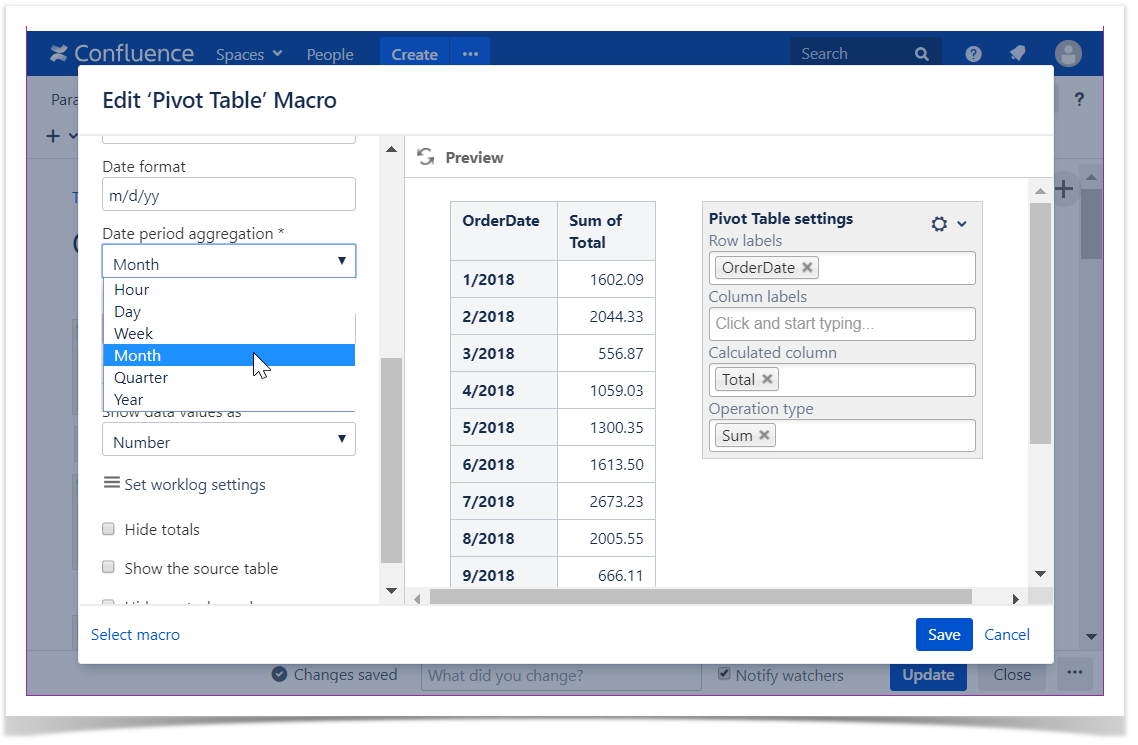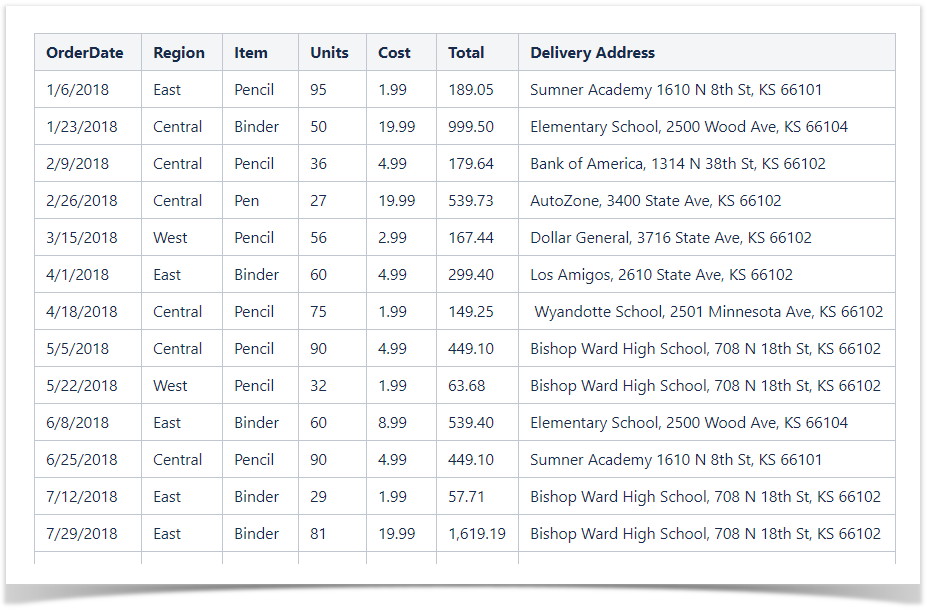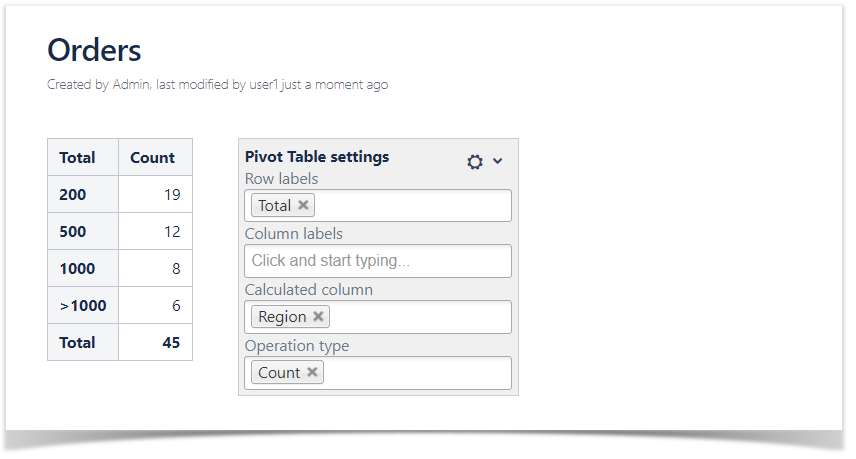Aggregating data against time periods
When you deal with specific dates, sometimes you may need to aggregate this data against the larger time periods (such as weeks, months, quarters, or years).
To set the date periods aggregation:
- Switch the page to the edit mode.
- Select the Pivot Table macro and click Edit.
- Switch to the Options tab.
- Locate the Date format box and enter the correct date format used in your source table.
- Locate the Date period aggregation option and select the time period for aggregation.
- Save the macro and the page.
- Define the parameters of the Pivot Table macro on the control panel:
- Row Labels - select the table column with dates for aggregation.
- Calculated Column - select the column for calculation.
- Operation Type - select the appropriate operation type.
- Save the changes.
Aggregating data against time periods supports dates only:
- Hour
- Day (default)
- Week
- Month
- Quarter
- Year
Aggregating data against the number ranges
When working with large tables containing numeric values, sometimes you may need to aggregate the data against the number ranges (for instance, from 0 to 100, from 100 to 200, from 200 to 300, more than 300).
To set the number range aggregation:
- Switch the page to the edit mode.
- Select the Pivot Table macro and click Edit .
- Switch to the Options tab.
- Locate the Number range aggregation option. Define the range of numbers, worklog periods, or time intervals against which numeric values will be aggregated.
- Save the macro and the page.
- Define the parameters of the Pivot Table macro on the control panel:
- Row Labels - select the table column with numeric values for aggregation.
- Calculated Column - select the column for calculation.
- Operation Type - select the appropriate operation type.
8. Save the changes.
The Number range aggregation supports aggregation by:
- Numbers
- Time intervals
- Worklogs
Define the range of numbers, worklog periods, or time intervals against which numeric values will be aggregated. The range for aggregation can be specified in the following formats:
| Format | Settings example | Aggregation intervals |
|---|---|---|
| Inclusive number intervals | [100;250;500] | 0-100, 101-250, 251-500, and 500+ |
| Exclusive number intervals | (100;250;500) | 0-99, 100-249, 250-499, and 500+ |
| Single number | 10 | 1-9, 10-19, 20-29 |
| Exponents | e2 | 100, 10 000, 1 000 000 |




